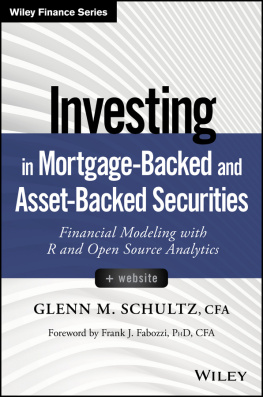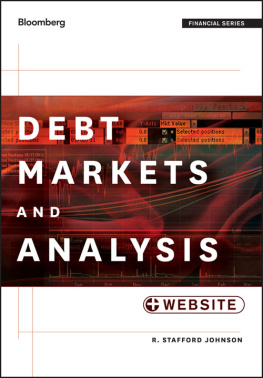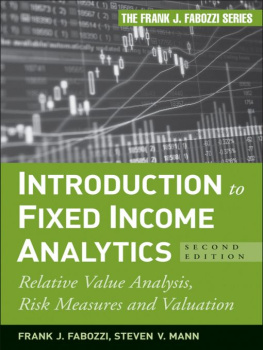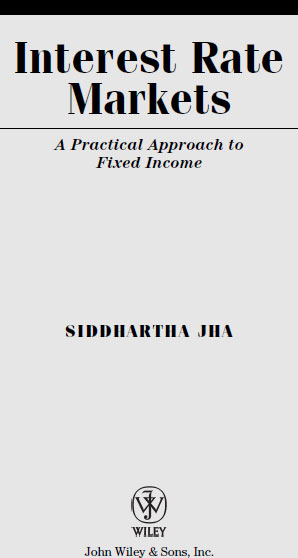Founded in 1807, John Wiley & Sons is the oldest independent publishing company in the United States. With offices in North America, Europe, Australia, and Asia, Wiley is globally committed to developing and marketing print and electronic products and services for our customers' professional and personal knowledge and understanding.
The Wiley Trading series features books by traders who have survived the market's ever-changing temperament and have prosperedsome by reinventing systems, others by getting back to basics. Whether the reader is a novice trader, a professional, or somewhere in between, these books will provide the advice and strategies needed to prosper today and well into the future.
For a list of available titles, visit our Web site at www.WileyFinance.com .
Copyright 2011 by Siddhartha Jha. All rights reserved.
Published by John Wiley & Sons, Inc., Hoboken, New Jersey.
Published simultaneously in Canada.
No part of this publication may be reproduced, stored in a retrieval system, or transmitted in any form or by any means, electronic, mechanical, photocopying, recording, scanning, or otherwise, except as permitted under Section 107 or 108 of the 1976 United States Copyright Act, without either the prior written permission of the Publisher, or authorization through payment of the appropriate per-copy fee to the Copyright Clearance Center, Inc., 222 Rosewood Drive, Danvers, MA 01923, (978) 750-8400, fax (978) 646-8600, or on the Web at www.copyright.com . Requests to the Publisher for permission should be addressed to the Permissions Department, John Wiley & Sons, Inc., 111 River Street, Hoboken, NJ 07030, (201) 748-6011, fax (201) 748-6008, or online at http://www.wiley.com/go/permissions .
Limit of Liability/Disclaimer of Warranty: While the publisher and author have used their best efforts in preparing this book, they make no representations or warranties with respect to the accuracy or completeness of the contents of this book and specifically disclaim any implied warranties of merchantability or fitness for a particular purpose. No warranty may be created or extended by sales representatives or written sales materials. The advice and strategies contained herein may not be suitable for your situation. You should consult with a professional where appropriate. Neither the publisher nor author shall be liable for any loss of profit or any other commercial damages, including but not limited to special, incidental, consequential, or other damages.
For general information on our other products and services or for technical support, please contact our Customer Care Department within the United States at (800) 762-2974, outside the United States at (317) 572-3993 or fax (317) 572-4002.
Wiley also publishes its books in a variety of electronic formats. Some content that appears in print may not be available in electronic books. For more information about Wiley products, visit our web site at www.wiley.com .
Library of Congress Cataloging-in-Publication Data:
Jha, Siddhartha, 1984
Interest rate markets : a practical approach to fixed income / Siddhartha Jha.
p. cm. (Wiley trading series)
Includes bibliographical references and index.
ISBN 978-0-470-93220-9 (cloth); ISBN 978-1-118-01777-7 (ebk);
ISBN 978-1-118-01778-4 (ebk); ISBN 978-1-118-01779-1 (ebk)
1. Interest rates. 2. Fixed-income securities. 3. Bonds. I. Title.
HG1621.J43 2011
332.632044dc22
2010043312
To my parents
Acknowledgments
This work is the outcome of inspiration, training, and support I received from so many colleagues, friends, and family. Much as I am deeply indebted to them, I cannot possibly mention them all in the short space here. To name just a few, Pavan Wadhwa and Srini Ramaswamy helped me understand markets in a thorough and logical manner throughout my career. I would like to thank Ross Jackman and Russ Mannis for their encouragement at the start of my career in municipals. My discussions about finance with colleagues such as Manas Baveja and Anthony Heading over the years have been instrumental in addressing any doubts in my thought process. I also want to acknowledge Kelly for her unwavering support.
A number of individuals took the time to perform the arduous task of editing and offered advice on content. Specifically, I want to express my gratitude to my dad and to Hitomi Kimura for their assistance.
Last, but definitely not least, I would like to thank the editing staff at Wiley who took the time to thoroughly edit my manuscripts. In particular, I thank Laura Walsh, Judy Howarth, and Laura Cherkas for their assistance with the whole publication process.
Introduction
The U.S. fixed income market, with securities worth trillions of dollars traded yearly, is one of the largest in the world. It attracts a wide variety of borrowers and investors, from individuals and corporations to governments. The market offers an array of instruments such as bonds, swaps, futures, and options for trading or managing risk. As the size and sophistication of the U.S. fixed income market has increased over the past two decades, so have the challenges and opportunities that come along with these instruments. Managing interest rate risk has become a crucial task for portfolio managers. Indeed, the various crises that punctuated the financial markets over the past two decades have underscored the importance of this task. Therefore, given the complexity of interest rate products and the range of macroeconomic factors that affect them, participants in the fixed income markets need to have frameworks for logical and in-depth analysis of trades and embedded risks.
Such a framework needs to be based on the principles of mathematical modeling as well as an intuitive grasp of the economy and monetary policy. Mathematical models are important because the contemporary fixed income market has numerous complex products that require quantitative foundations. Likewise, the knowledge of fundamentals is indispensable because markets are more integrated than ever before. However, the current literature on the U.S. fixed income market lacks the balance of these essential elements. Some works rely on a qualitative approach, whereas others exaggerate the significance of quantitative models. The overemphasis on models, as is well known, was a part of the problem in recent financial crises.
This book breaks a new, middle ground. It begins with the essential mathematical tools needed to objectively analyze data and financial instruments. These instruments can be thought of as packages of different types of risks that on one hand provide opportunity to trade, and on the other hand involve careful management. Such management requires both mathematical skills and an intuitive grasp of the economy and financial markets. To this end, this book analyzes fundamentals and financial flows and identifies the optimal instruments for a trade using quantitative tools.
This book is meant for both newcomers and experienced professionals in fixed income markets. For newcomers, it builds an understanding of bonds and more complex products such as interest rate swaps, futures, and options. Subsequently, it describes the driving factors behind fixed income markets and explains how to use these products to express views on interest rates and their spreads. For experienced professionals, the book describes economic fundamentals and the behavior of market participants in order to explain short-term as well as long-term drivers of interest rates. As an important companion to trading, the book discusses hedging. The details include its general principles as well as the choice of instrument for a hedge. The information is meant to enable effective risk management and construction of market indicators. Finally, the limitations and pitfalls of each type of trade are discussed; the lessons of past financial crises show there is no such thing as a safe trade.







